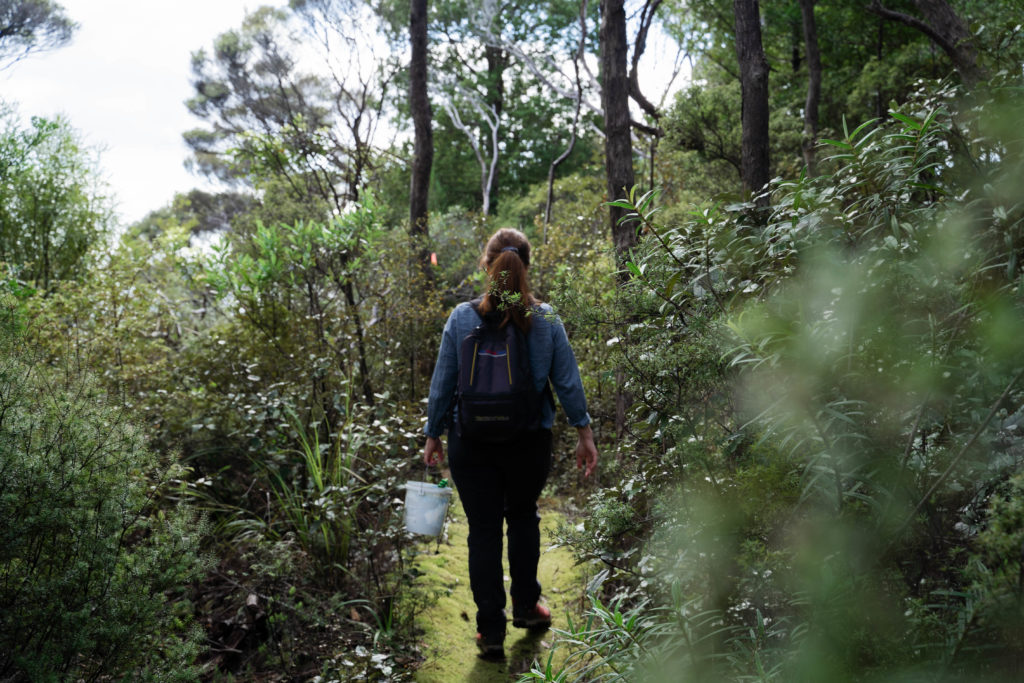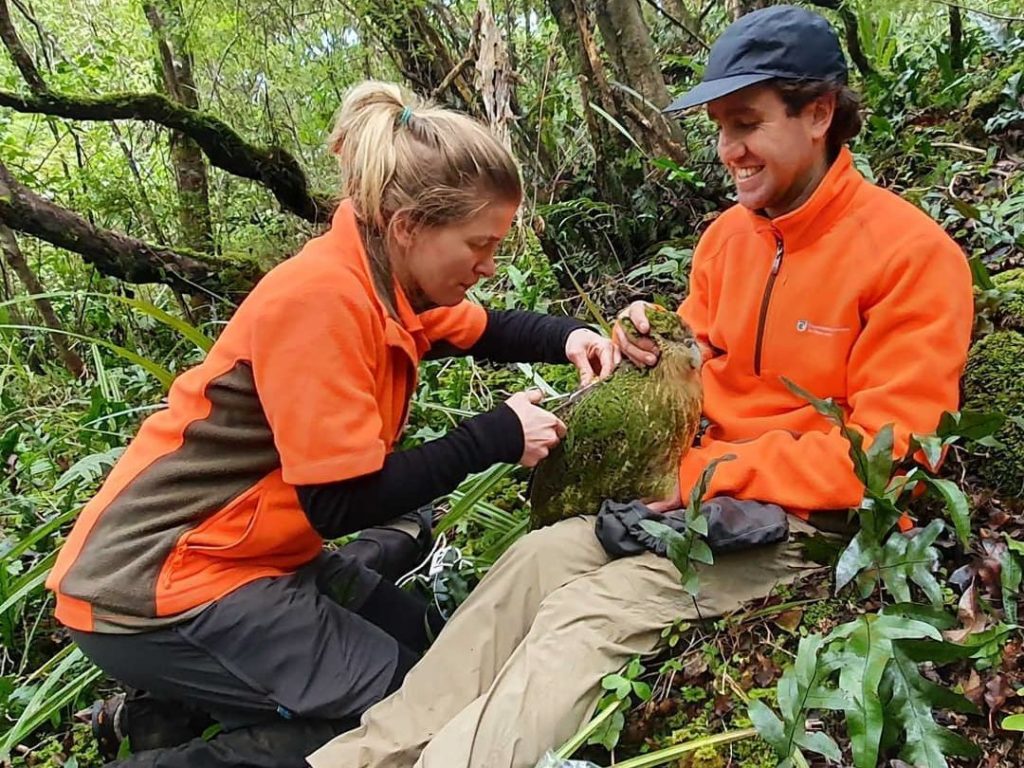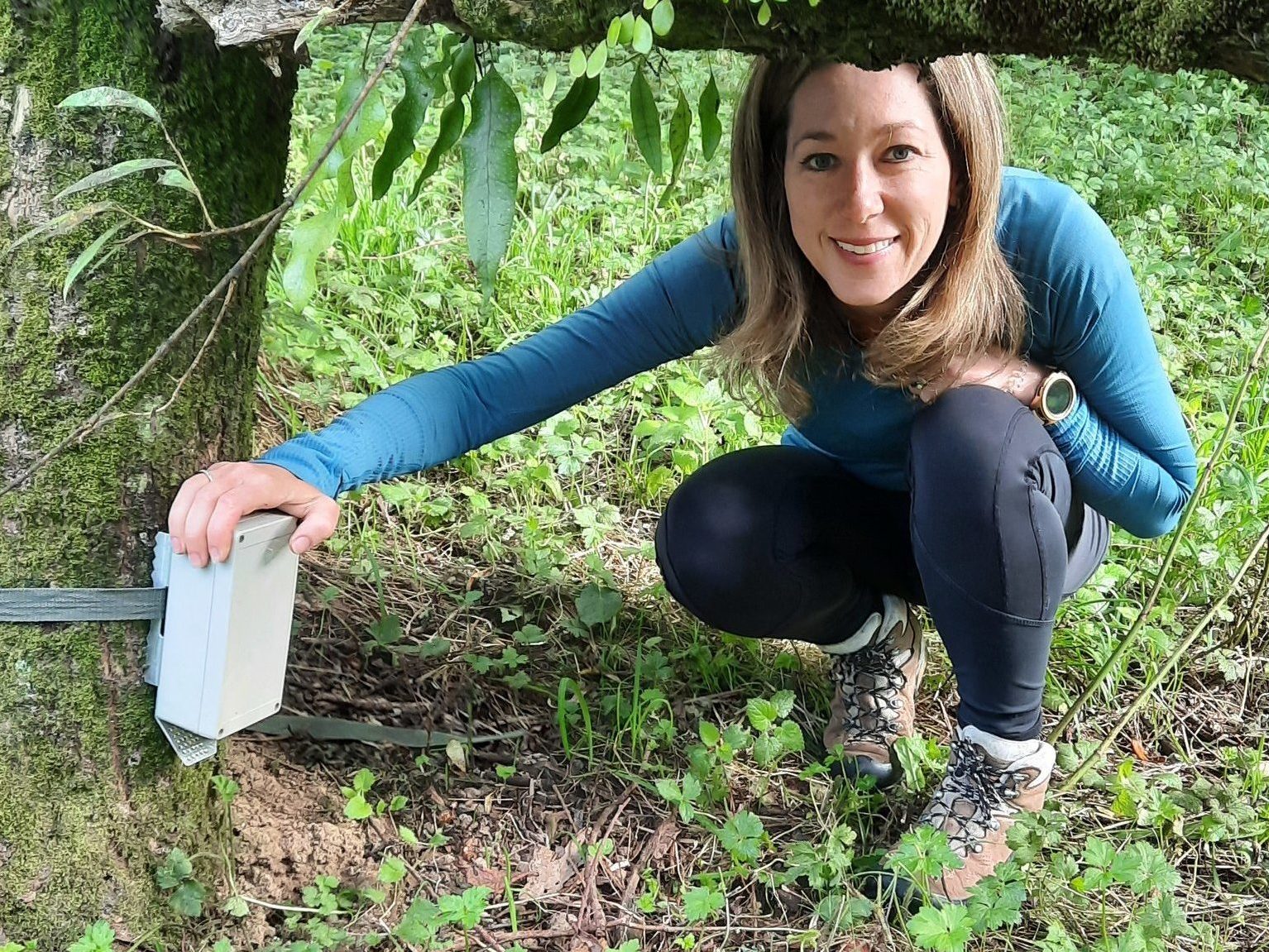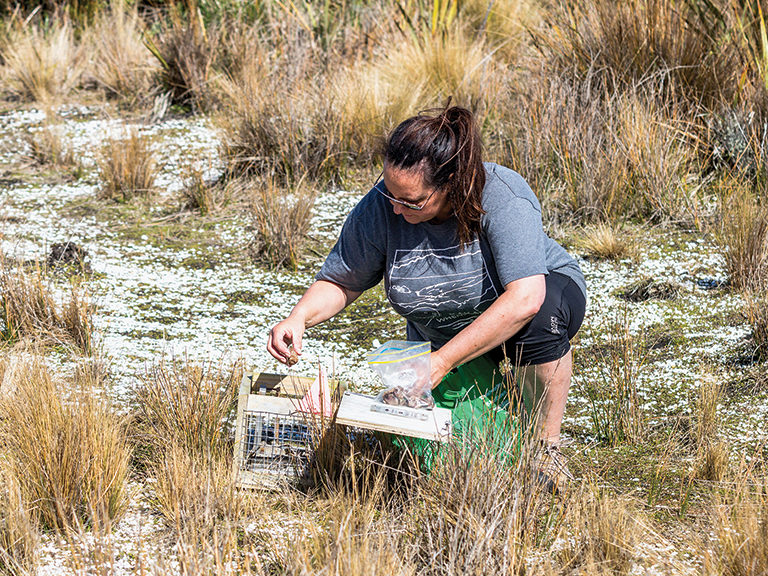The gender gap in conservation is no secret — fewer than 30 percent of the world’s researchers are women. In celebration of International Women’s Day, we spoke to five women in conservation with advice and insights to inspire others to realise “I can do that, too.”

1. Being inspired by the taonga you’re protecting – Sarah Little
Confessed bird nerd Sarah Little spends most days caring for kākāpo. She’s a Department of Conservation ranger on predator free island Whenua Hou (Codfish Island), protecting our rare kākāpō from extinction.
When asked who inspires her, Sarah replies, “I’m really lucky to be part of a team of incredible wahine. But the most inspirational would have to be Nora. She’s a tough, commendable female, matriarch and leader with a great roosting spot.”
And who wouldn’t find Nora inspiring? She is one of the 91 female kākāpō. Nora has raised generations of kākāpō – boasting a big fluffy family of chicks, grandchicks and even great grandchicks.
Nora may be an old bird, but she’s still alive and kicking.

This breeding season, Nora is one of the oldest female kākāpō still out there getting busy and saving her species.
If, like Nora, you’d like to get involved in conservation, Sarah has some sound advice for you: “Just do it!”
“It’s hard not to be in complete awe of all of the cool species we have here in Aotearoa, and being able to contribute towards conserving their future is the stuff of dreams,” says Sarah.
2. We need you! – Helen Blackie

As a Senior Principal Biosecurity Consultant at Boffa Miskell, Helen Blackie spends a fair bit of her time managing research and development projects in pest management and conservation.
For Helen, making her voice heard and cementing a reputation in a traditionally male dominated industry has been hard work. But she says the career path is becoming easier as more women enter the industry.
“We need greater gender equality as this helps remove barriers,” says Helen. “Women in science, technology, engineering and maths (STEM) are still incredibly under-represented.”
“Only 30 percent of the world’s researchers in STEM consist of women. This is slowly changing but not nearly as fast as other disciplines.”
If you’re a woman thinking of launching a career in conservation, Helen has a strong message for you.
“We need you! Conservation in NZ is nearing a crisis point. The more people who can get involved, the better. Getting involved with your local conservation groups is a great starting point, even if it’s in a volunteering role,” she says.
3. Being a connector between communities and their natural environments – Biz Bell
In her work, Biz Bell of Wildlife Management International Ltd has managed projects that have successfully eradicated introduced predators from islands across the world – including Europe, the Pacific and Caribbean. And for Biz, it’s so much more than just a professional win.
“I love seeing new predator free spaces that allow species to recover. There’s also a real joy that comes from seeing communities reconnecting with their natural environments and taking ownership of these projects,” she says.

4. Being a ‘Jane’ of all trades – Sara Smerdon

Every day, conservation volunteers like Sara Smerdon work towards getting their patch predator free. But unlike most, Sara lives in the very forest she protects.
Sara (along with her partner) is one of 24 landowners of Mahakirau Forest Estate in the Coromandel – a native forest subdivision filled with rare species and protected forever by a special covenant.
As a Volunteer Community Advocate for Mahakirau, Sara Smerdon wears many hats – predator control pro, biodiversity advocate and project administrator, to name a few.
Speaking on her day-to-day duties, Sara explains, “Dry days are field days. Currently, I service over 2,500 pest control devices on a monthly cycle. In less than a decade, I’ve clocked up well over half a million trap checks and removed 25 ferrets, 100 feral cats, over 1,500 stoats and 6,000+ rats.”
“Wet days are office days, where I work through a never-ending list of tasks that are just as important in keeping conservation projects up and running.”
“And by night, I love to explore and document the marvels abound in our beautiful patch, most animated after dark.”
To put it simply, Sara says, “I spend every waking hour nurturing the extraordinary piece of paradise I am so fortunate to call home.”
5. Thanking the women before us, encouraging those to come – Estelle Pura Pera-Leask
Estelle Pura Pera-Leask is a key figure bringing Māori voices and expertise to the movement.
She represents Te Runanga o Ngai Tahu on the Southland Conservation Board and Te Runanga o Awarua on the Whenua Hou (Codfish Island) komiti (committee).
Throughout Estelle’s career, she says she faced both blatant and casual racism and sexism.
“As a wahine Māori, I have encountered many challenges in my journey. However, I have learnt to overcome them because I do what I do for my people. I have my tupuna (ancestors) standing beside me, giving me strength.”

“I’m inspired by the many wahine Māori across Aotearoa who advocate for te taiao and work tirelessly in the conservation space. For many of these women, they’ve come from a background of intergenerational poverty, hardship and trauma from colonisation.”
“Yet these wahine toa still understand the obligations of kaitiakitanga and protection of papatūānuku (the land).”
For fellow wahine thinking of a career in conservation, Estelle’s advice is to get involved.
“This mahi is rewarding in so many ways – ways you would never imagine. You will improve your physical and mental health and wellbeing and meet the most beautiful, passionate kaitiaki”.
“You will learn to be more appreciative of the simple things in life that also happen to be the most precious. Te mana ki te mauri o Te Taiao ki uta ki tai,” she says.

